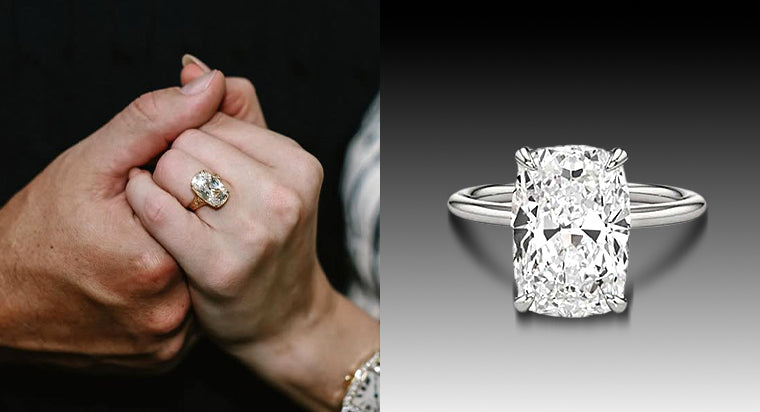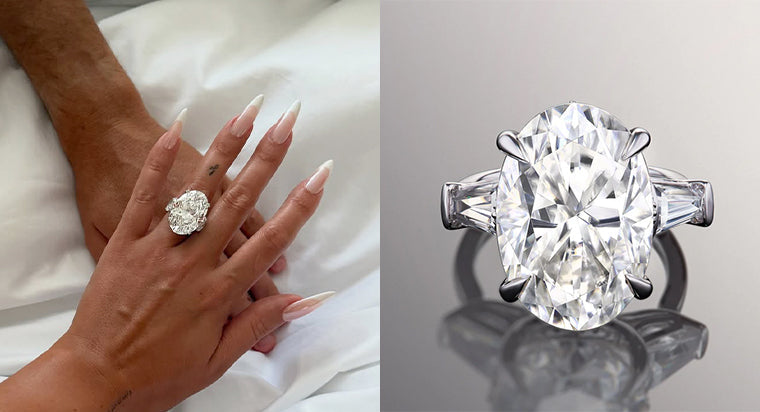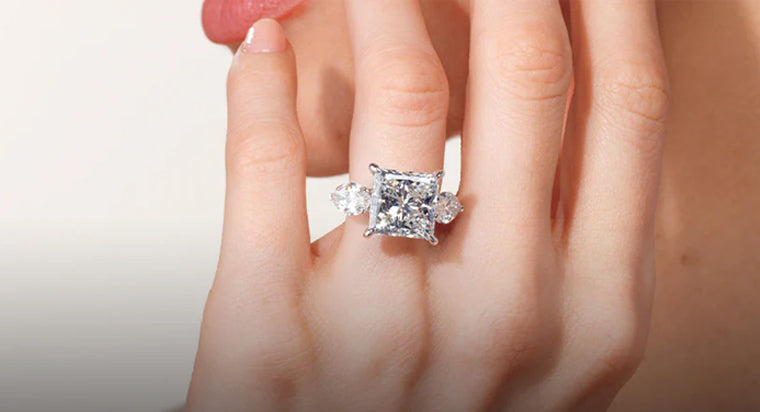Here's What You Need to Know About Baguette Diamond Engagement Rings

A baguette diamond engagement ring features a rectangular-shaped stone (or stones). It's part of the "step cut" family of diamond shapes that includes the emerald cut and Asscher cut. A sophisticated, classic choice, baguette diamonds have a sleek, linear look; they're truly versatile and work beautifully in vintage or contemporary settings.
TABLE OF CONTENTS
What is a Baguette Diamond?
Named after those lean, long loaves of French bread — and probably not a little because of the romantic connotations of Paris — a baguette diamond has a rectangular shape and is cut in grades, or steps, along its borders. First popular in the Art Deco era, baguette diamonds traditionally have 14 facets, lending their relatively large table size a lovely amount of sparkle (though less than the round brilliant, which has 58, and the emerald cut, which has 50 to 58).
Which is an important point: Contrary to popular belief, baguette diamonds aren't just tiny emerald cut diamonds, although these two are sometimes paired together on three-stone engagement rings.
How are Baguette Diamonds Used on Engagement Rings vs. Wedding Bands?
On engagement rings, baguette diamonds are generally used as the side stones on three-stone engagement rings. These can be regular baguettes or tapered baguette stones, in which either the top or bottom edge of the stone is narrower than the other.
In wedding bands, you'll find baguette diamonds fitted together by their long sides, creating a thicker band, or end-to-end, for a thinner band. Both styles are a variation on the traditional pave band that typically uses round diamonds.
Is a Baguette Diamond Engagement Ring Right for You?
Thinking of getting a three stone engagement ring? The first and most important question: What shape is your center diamond? Some brides-to-be like the look of combining brilliant and step cut diamonds; others don't.
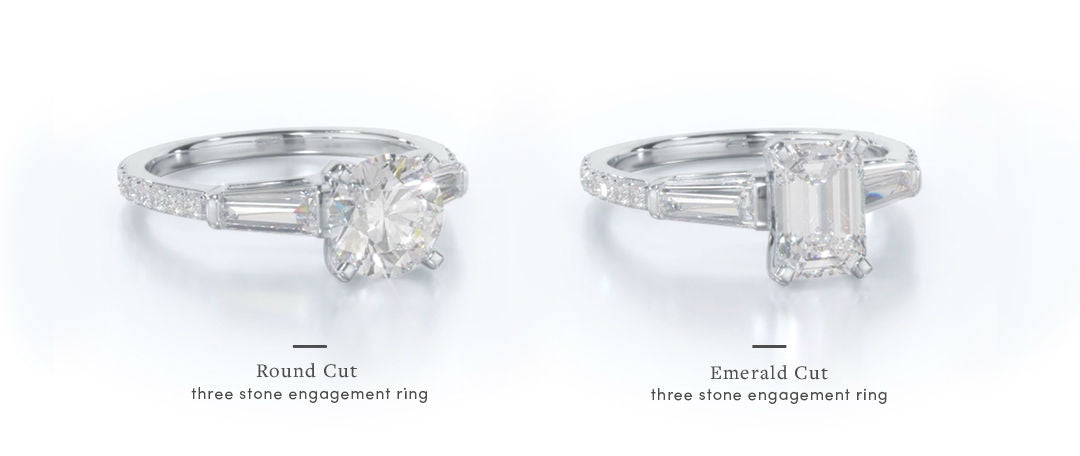
If the combination look isn't for you, an emerald cut diamond at the center might be best. Or you could choose a three-stone engagement ring, with round or pear side stones. There are plenty of options.
Our Baguette Diamond Engagement Rings
Although you'll find baguette diamond engagement rings below with round center stone, our settings also offer step-cut diamonds like emerald cut as options. The differences between these styles are subtle, but there are things to love about each way the baguette diamonds are used. If you're finding it hard to decide between them, you can always use our free home preview program to try them on in person.
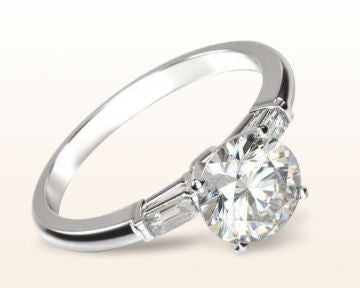
Three Stone Baguette Diamond Engagement Ring
Totally classic, this three stone setting includes a round center diamond with accenting baguette side stones.
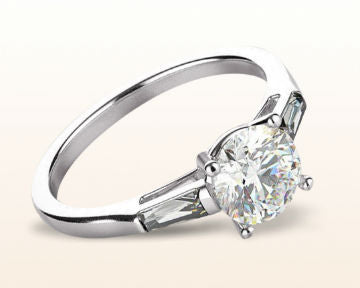
Elegance Three Baguette Diamond Engagement Ring
This ring features two tapered baguettes framing the center diamond, providing sophisticated, understated sparkle.
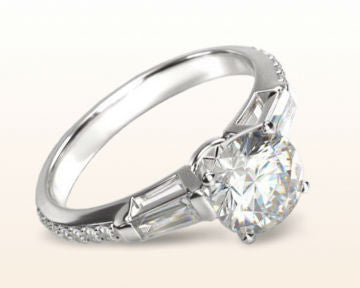
Three Stone Tapered Baguette Diamond Engagement Ring
Maximum shine. This three-stone style includes a round center diamond flanked with tapered baguettes, while pave accent stones radiate along the band.
Loving the three stone settings but not quite sold on the baguette diamonds yet? No worries. We have a wide range of three stone engagement rings for you to choose from with a variety of diamond shapes as the side stones.

